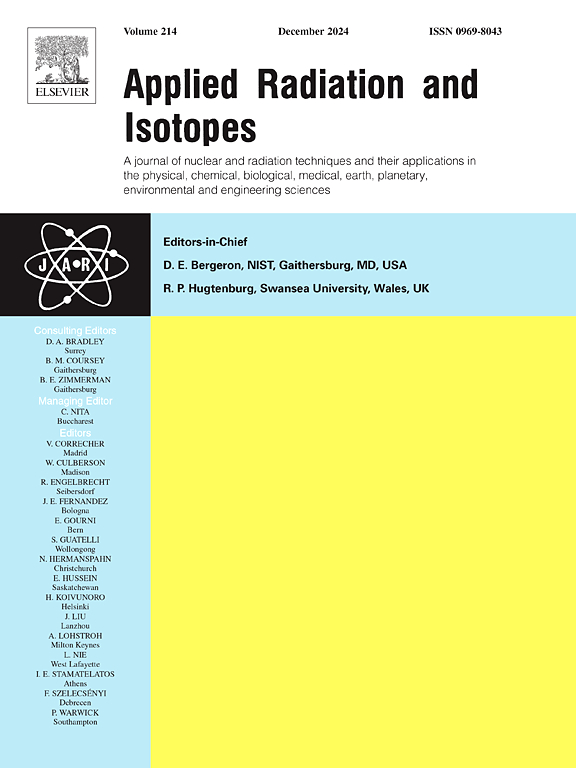Non-photocatalytic electricity generation and thermoluminescence in natural hematite: Application in hydroelectric cell and dosimeter
IF 1.6
3区 工程技术
Q3 CHEMISTRY, INORGANIC & NUCLEAR
引用次数: 0
Abstract
Environmentally friendly hydroelectric power cells (HEC) and thermoluminescence dosimeters (TL) were manufactured using natural hematite. Scanning electron microscopy (SEM), transmission electron microscopy (TEM) and X-ray diffraction (XRD) studies confirmed multimodal particle size range of 30–90 nm for natural hematite. Brunauer-Emmett-Teller (BET) analysis confirmed mesoporous and nanoporous structure with average pore size of 30 nm. X-ray Photoelectron Spectroscopy, photoluminescence, ultraviolet–visible spectral analyses confirmed the presence of oxygen vacancies on the surface of hematite. Surface area of natural hematite was considerable (33.48 m2/g), band gap was small (1.7 eV), and porosity was high (31%). A square hematite hydroelectric power cell with an area of 4.84 cm2 generated electricity by redox reaction and produced an open circuit voltage of 0.98 V, a stable short circuit current of 7.0 mA, and open circuit power of 6.86 mW. The TL annealing curve is recorded using a hematite sample annealed at different temperatures (100 °C–700 °C) and irradiated with a60Co gamma source with different radiation doses (100 Gy, 15 kGy). Deconvolution analysis of the TL glow curve reveals a prominent single emission band at 178 °C and high linearity in the dose range from 2 kGy to 9 kGy for sample annealed at 400 °C. Oxygen vacancies, which function as luminous traps, are thought to be the cause of the cause of the observed behaviour. Chen's peak method and initial rise method are used to calculate trapping factors such as activation energy, frequency factor and order of kinetics.
天然赤铁矿中的非光催化发电和热致发光:在水力发电池和剂量计中的应用
本文章由计算机程序翻译,如有差异,请以英文原文为准。
求助全文
约1分钟内获得全文
求助全文
来源期刊

Applied Radiation and Isotopes
工程技术-核科学技术
CiteScore
3.00
自引率
12.50%
发文量
406
审稿时长
13.5 months
期刊介绍:
Applied Radiation and Isotopes provides a high quality medium for the publication of substantial, original and scientific and technological papers on the development and peaceful application of nuclear, radiation and radionuclide techniques in chemistry, physics, biochemistry, biology, medicine, security, engineering and in the earth, planetary and environmental sciences, all including dosimetry. Nuclear techniques are defined in the broadest sense and both experimental and theoretical papers are welcome. They include the development and use of α- and β-particles, X-rays and γ-rays, neutrons and other nuclear particles and radiations from all sources, including radionuclides, synchrotron sources, cyclotrons and reactors and from the natural environment.
The journal aims to publish papers with significance to an international audience, containing substantial novelty and scientific impact. The Editors reserve the rights to reject, with or without external review, papers that do not meet these criteria.
Papers dealing with radiation processing, i.e., where radiation is used to bring about a biological, chemical or physical change in a material, should be directed to our sister journal Radiation Physics and Chemistry.
 求助内容:
求助内容: 应助结果提醒方式:
应助结果提醒方式:


